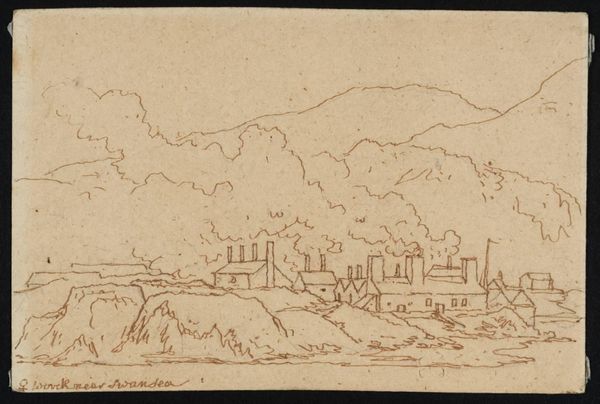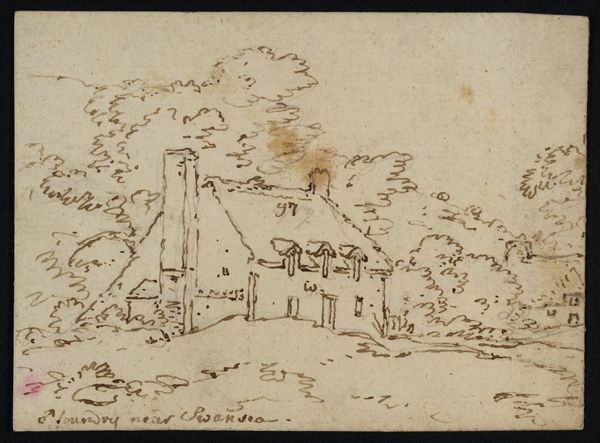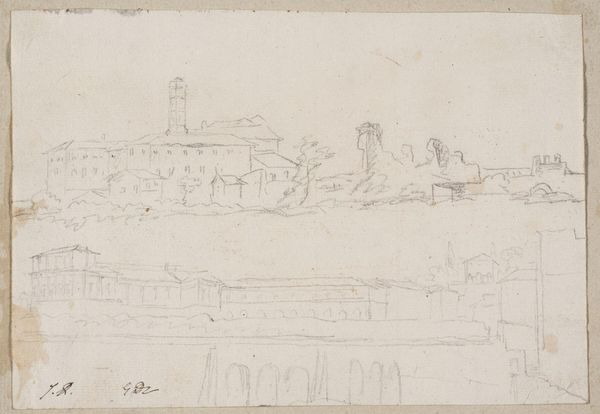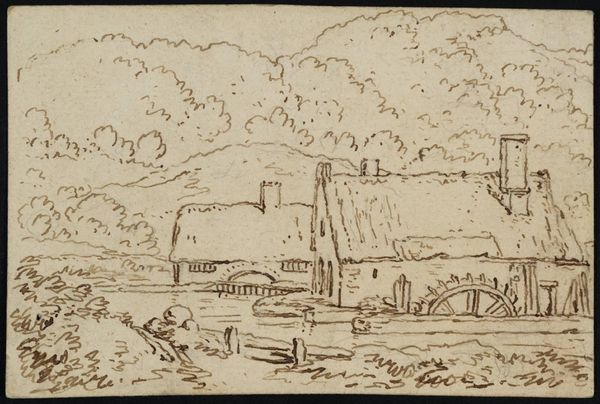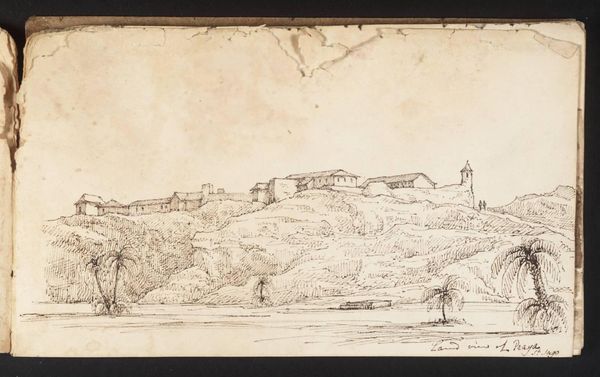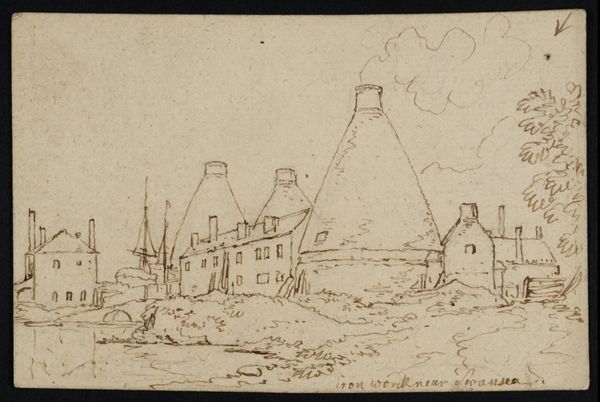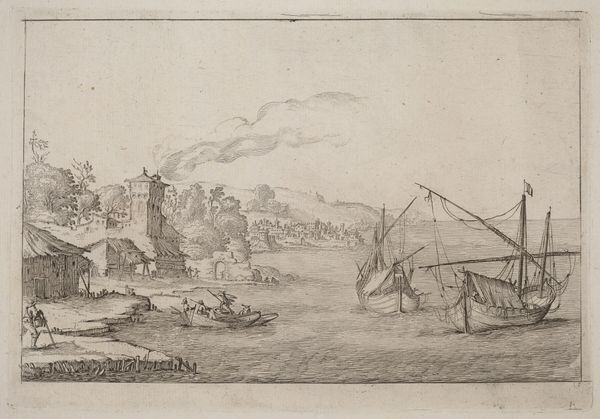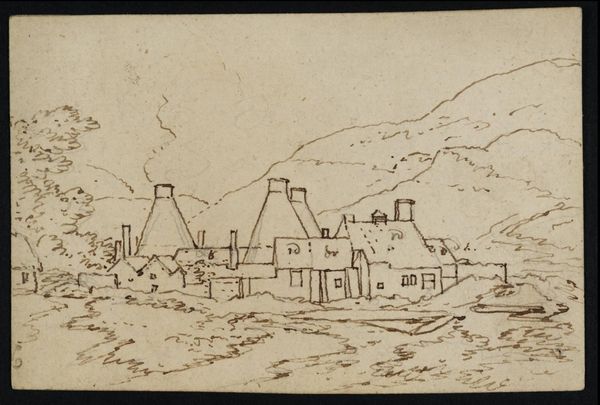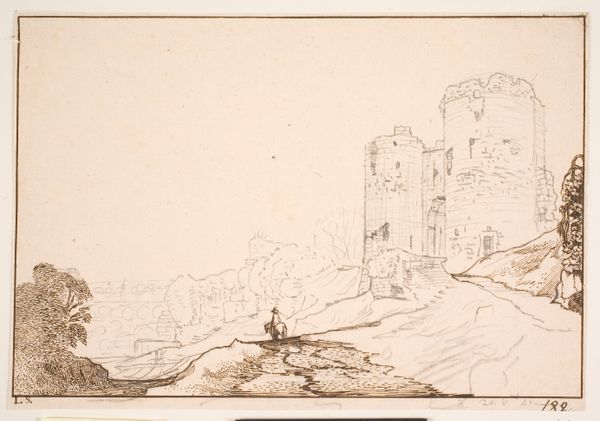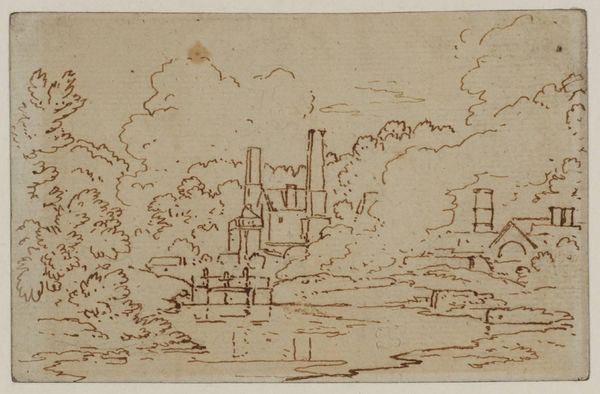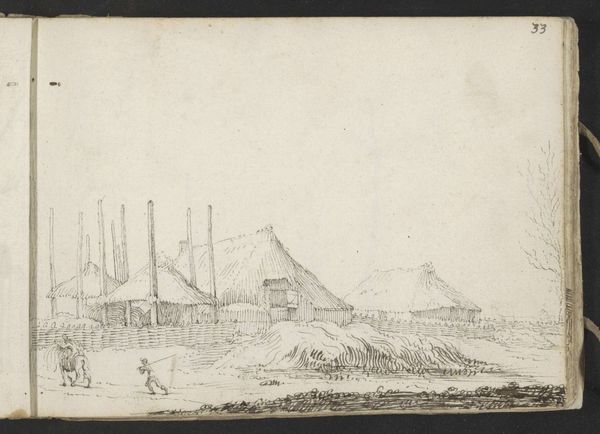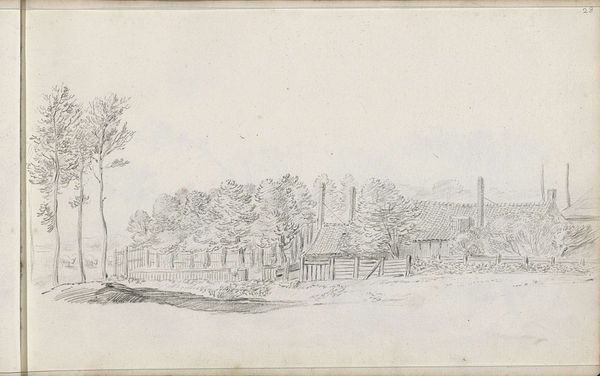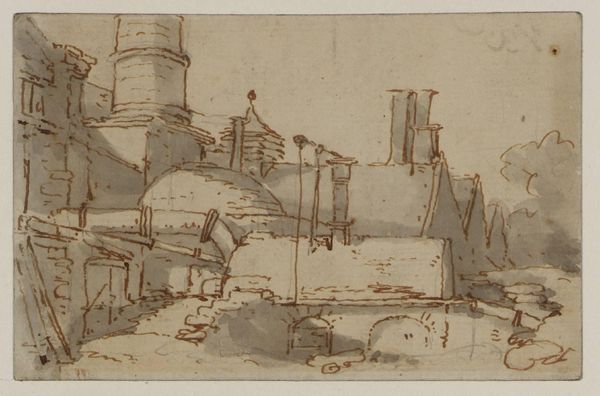
A Large Copper-Smelting Works at Swansea (Perhaps the Copper Works at Landore on the River Tawe, North of Swansea) c. 1786 - 1800
0:00
0:00
Dimensions: support: 80 x 119 mm
Copyright: CC-BY-NC-ND 4.0 DEED, Photo: Tate
Curator: This quick sketch by Philip James De Loutherbourg, titled "A Large Copper-Smelting Works at Swansea," captures what was likely the copper works at Landore. Editor: It's surprisingly delicate, given the subject matter. The thin lines give it an almost ethereal quality, despite depicting such an industrial site. Curator: Indeed. De Loutherbourg was keen on documenting the impact of industrialization on the landscape, a recurring theme in art during this period. The copper industry was booming, and this work reflects its increasing presence and cultural importance. Editor: Precisely. The drawing style itself speaks to its function; it’s more a record, an annotation, prioritizing the depiction of labor through those smoking chimneys, with attention to spatial relationships, rather than aesthetic refinement. Curator: And it’s important to consider Swansea’s pivotal role in the global copper trade during the 18th and 19th centuries. This drawing provides insight into the processes that fueled Britain’s industrial growth. Editor: I agree. It is vital to remember that behind every beautiful artifact lies a complex web of extraction, labor, and environmental changes, and this sketch reveals that story. Curator: Absolutely, offering us a glimpse into an era of immense transformation. Editor: Yes, a poignant reflection on the making of things.
